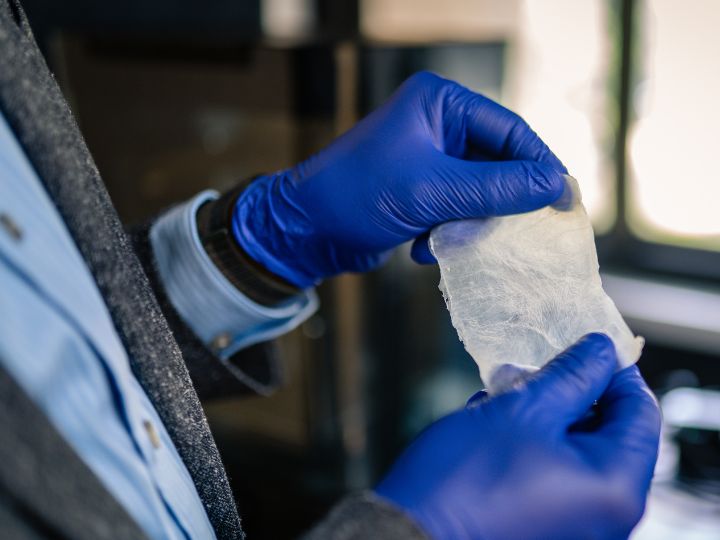2025-07-08 アメリカ国立標準技術研究所(NIST)

Close-up of a superconducting sensor board containing multiple transition edge sensors (top row of squares), which detect energy released by individual radioactive decay events. Credit: M. Carlson/NIST
<関連情報>
- https://www.nist.gov/news-events/news/2025/07/new-nist-method-precisely-measures-radioactivity-tiny-samples
- https://iopscience.iop.org/article/10.1088/1681-7575/adecaa
マイクログラムインクジェット重量測定と崩壊エネルギー分光法を用いたAm-241溶液の一次放射能測定 Primary activity measurement of an Am-241 solution using microgram inkjet gravimetry and decay energy spectrometry
Ryan Fitzgerald, Bradley K Alpert, Denis Bergeron, Max Carlson, Richard Essex, Sean Jollota, Kelsey M Morgan, Shin Muramoto, Svetlana Nour, Galen C O’Neil,…
Metrologia Accepted Manuscript online: 7 July 2025
DOI:10.1088/1681-7575/adecaa
Abstract
We demonstrate a method for radionuclide assay that is spectroscopic with 100 % counting efficiency for alpha decay. Advancing both cryogenic decay energy spectrometry (DES) and drop-on-demand inkjet metrology, a solution of Am-241 was assayed for massic activity (of order 100 kBq/g) with a relative combined standard uncertainty less than 1 %. We implement live-timed counting, spectroscopic analysis, validation by liquid scintillation (LS) counting, and confirmation of quantitative solution transfer. Experimental DES spectra are well modeled with a Monte Carlo simulation. The model was further used to simulate Pu-238 and Pu-240 impurities, calculate detection limits, and demonstrate the potential for tracer-free multi-nuclide analysis, which will be valuable for new cancer therapeutics based on decay chains, Standard Reference Materials (SRMs) containing impurities, and more widely in nuclear energy, environmental monitoring, security, and forensics.



